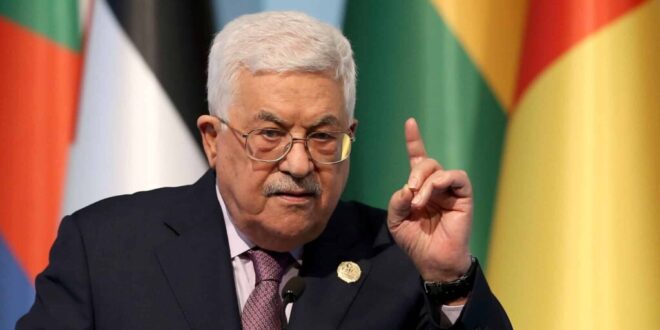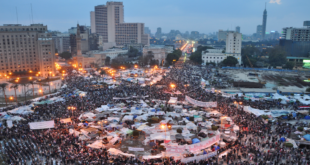Tensions between Hamas and Fatah, the two largest Palestinian groups, appear to be growing and becoming more openly visible. While the two groups have been rivals historically, the October 7 attack led to focus on Gaza, and the Palestinian Authority in the West Bank, where Fatah is strongest, has appeared sidelined.
Recently, Fatah slammed Hamas as “those who were responsible for the return of the occupation to Gaza Strip and caused the Nakba [catastrophe] which our Palestinian people live…have no right to dictate national priorities.” Hamas has also been critiquing the Palestinian Authority’s new Prime Minister, Mohammad Mustafa. Hamas claims that the Mustafa appointment lacks consensus. Clearly, there is much more going on beneath the surface.
The Hamas decision to launch the unprecedented massacre of October 7 was an attempt to launch a first strike that could change the region. It sought to derail talk of Israel-Saudi normalization, for instance. It also set in motion Iranian-backed attacks from Hezbollah and the Houthis, and it led to Iran operationalizing groups in Iraq and Syria.
Therefore, Hamas was in the driver’s seat in the region, with pretensions that it could rise to the level of a regional power. Hamas, for instance, was able to get tacit support from Russia and China in the wake of its attack. Hamas is also hosted by Doha, a major non-NATO ally of the West. It is also backed by Turkey, a NATO member. This means Hamas has appeared over the last five months to be the center of attention. For the Palestinian Authority, this is a potential disaster.
On the one hand, the Hamas attack could lead Hamas to try to take over the West Bank. It could leverage a hostage deal to gain influence. It could try to get some kind of a unity government in the West Bank that allows it to participate in politics. It could, for instance, get the PA to choose a “technocratic” government and then use that as a back door to move back to the West Bank. It could also play the long game and wait out the aging Palestinian Authority leadership to swoop in several years from now. All of this would turn the clock back to the era before Hamas took over Gaza and ejected Fatah and Fatah’s Gazan leader, Mohammad Dahlan.
At the moment, Hamas has seen many of its members arrested in the West Bank. For instance, around 800 Hamas members were detained in the first month after the Hamas attack. It’s not clear how many have been detained today, but it’s clearly a large number. At the same time, the Palestinian Authority continues to face challenges to its power. It already lost control of parts of Jenin over the last several years.
This is the context of the current tensions between Hamas and Fatah. Hamas wants to continue to control parts of Gaza and then leverage that to increase its role in the West Bank. With support from anti-western countries abroad, it thinks it has smooth sailing ahead; all it has to do is wait. It also thinks it might be able to lure over some support from those who had been closer to Fatah over the last decades.
A welcome change to Ramallah
The Palestinian Authority has not been able to rally much support from abroad since October 7. But things are changing. The Mustafa appointment could bring a welcome change to Ramallah. On March 12, Mahmoud Abbas hosted Minister of Foreign Affairs of Canada Mélanie Joly in a positive meeting. The Palestinian Authority Foreign Minister also spoke with his Brazilian counterpart Mauro Vieira, and Abbas hosted the Brazilian at his office on March 17. Brazil has harshly critiqued Israel’s war in Gaza. Abbas also spoke with the Emir of Qatar on March 16.
Hamas-Fatah tensions now provide a potential silver lining for Gaza. This is an opening for Gazans to critique Hamas. “Since Hamas’s bloody coup in Gaza 17 years ago, Hamas has cultivated a narrative that labels any critics as collaborators or as aligning with Israel. This narrative, heavily promoted by Hamas supporters and influencers since the onset of this war, aims to stigmatize and discredit any dissent against Hamas and its reckless policies and wars,” noted human rights activist Ihab Hassan in a post on social media.
This opening to critique comes as Hamas continues to try to control humanitarian aid entering Gaza. Gunmen in Gaza have fired on people trying to get aid. Hamas has sent plainclothes thugs to harass people in northern Gaza. Hamas also murdered a clan leader in Gaza as a mafia-like way to send a message to the clans in Gaza not to work with Israel. The Palestinian Authority has also told the clans not to cooperate with Israel.
There are many balls in the air at the moment, and it is not clear how this will play out. For instance, the role of the various countries conducting air drops to Gaza and backing the airdrops, such as Jordan, the UK, the US, Germany, Egypt, and UAE, are all countries that have good relations with the Palestinian Authority. The UAE also supports the World Central Kitchen maritime corridor and the Spanish charity Open Arms. It’s unclear how countries interested in the PA returning to Gaza can make that happen in the current situation.
Israel has discussed the plan for a ‘day after,’ but it contains few practical details. The concept of humanitarian bubbles or pockets is one aspect of the plan. However, it’s not clear who will control these areas. So far, there has been a lot of chaos in northern Gaza, and Hamas feeds off chaos. In southern Gaza, Hamas continues to cling to a bastion in Rafah and also continues to control the central camps area. The terrorist group still has around 10,000 men. Israel is talking up an operation in Rafah, but there is also a push for a ceasefire, and the Rafah op won’t likely happen for weeks.
This means the Fatah-Hamas tensions come at a unique time of a new phase in the Gaza war. It remains to be seen if either side will exploit the tensions and actually seek to do something in Gaza or the West Bank. For now, the Palestinian Authority and Fatah have a chance to take the initiative after five months of Hamas being in the spotlight.
 Eurasia Press & News
Eurasia Press & News



